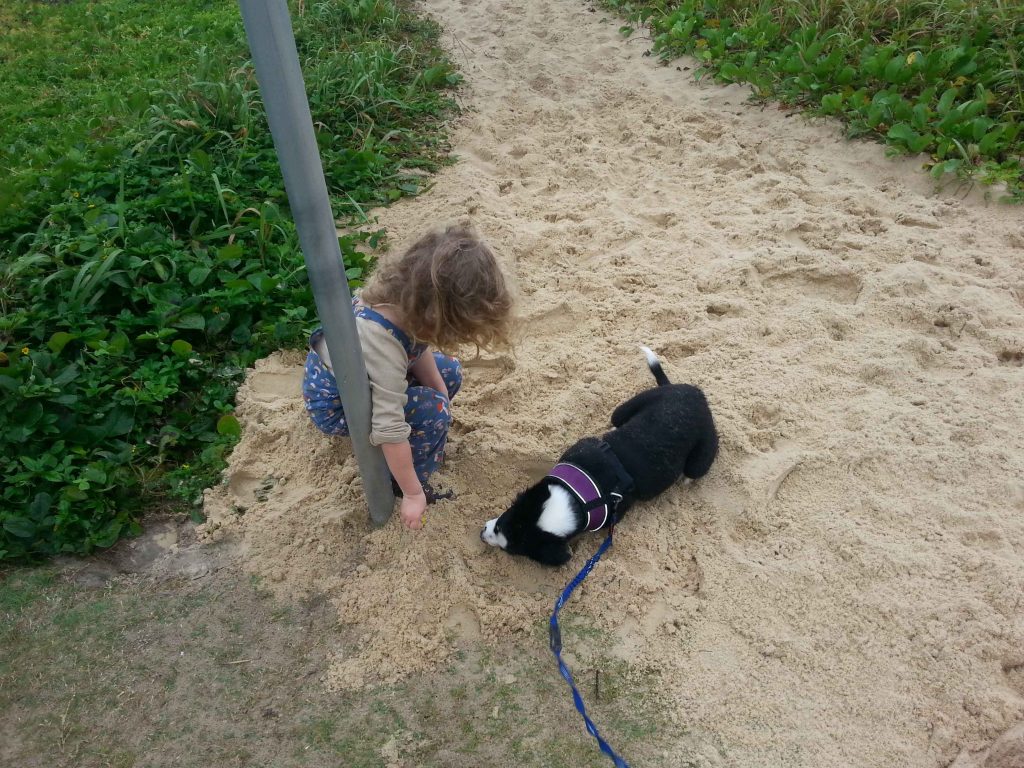We have had some stress in our herd lately, starting with our newest addition, Persephone. She is an 8 year old Welsh B pony who has previously been a broodmare. The introductory process did not go well, she broke through the electric fencing separating her from the other ponies. It turns out that her response to any aggressive approach is to turn her back and kick repeatedly and with great energy. Our ponies don’t appear familiar with this extreme tactic, the result was that Chloe got a hoof to the face injuring her eye. The knock on effect is, although the eye cleared up with the help of our vet, by the end of the week Chloe ended up with peritonitis. After almost a week with the vet, she recovered enough to come home. The whole experience exposed an issue in my previous cooperative care training with her; I had not proofed her enough with taking oral medication and she soon showing quite an aversion to the process. Also, the veterinary staff have no training in cooperative care and are very comfortable using both negative reinforcement and physical restraint, as this is how most horses are trained and handled. After a week of oral medication with no reinforcers or choices she was well over it. Yes, Chloe is a tiny pony and it is easy to physically restrain her, but that is not an approach I wish to follow for several reasons.
Chloe had a twice daily 10 day course of oral antibiotics when she arrived home, as well daily oral medication for stomach ulcers which is ongoing. With her aversion to any syringe coming near her mouth this regime was clearly having a detrimental effect on her feelings towards me, she was not greeting me with the same enthusiasm I usually receive from her and was starting to actively avoid me if I was holding anything that looked like it might contain her meds. I don’t want to be aversive if I can prevent it.
It is also well documented that chronic stress weakens the immune system and can contribute to illnesses and colic, which I definitely don’t want to deal with again! It is not just the medication tasting funny, but it is the entire situation of being restrained and forced to have something she doesn’t want. In fact when Chloe first came to us she disliked oral medications so much that she would not touch a treat she liked if it came from a syringe.
With a little bit of effort on my part I can change her feelings towards taking her medication so it becomes a a pleasant experience rather than a distressing one.
I took a different approach from previous training, I filled one of her giant medicating syringes with apple sauce. Last time I was using hand fed treats as the reinforcer to shape touching the syringe with lips. She was not even willing to sniff the syringe at first so I squirted some apple into a feed bucket and left the syringe in there. Dropping some treats in to the bucket sweetened the deal enough to convince her to investigate. By the time we got to the end of the 60cc syringe of apple she was looking at the syringe with some interest when I held it up and licking the apple off my hand. By the end of the next session she was taking the apple sauce by taking the syringe into the corner of her mouth (where horses have a gap where their incisor end and the molars start).
For the next session, after a little warm up with the apple sauce, we switched to using an empty ulcer medication tube followed by the apple syringe. The ulcer medication smells extremely strongly of star anise, to me it smells quite attractive, but Chloe does not appear to share my view.
Next session I made star anise “tea” and the reinforcer for taking the “medicated” syringe in her mouth was still the apple sauce reinforcer. Criteria was slowly raised with occasional squirts of the tea, which did not provoke a reaction.
One more session with the “tea” and I felt we were able to do the real thing again, with lots of apple sauce. A couple weeks on and she’s looking pleased to see me when I turn up in the morning with her meds and a couple carrot slices!

